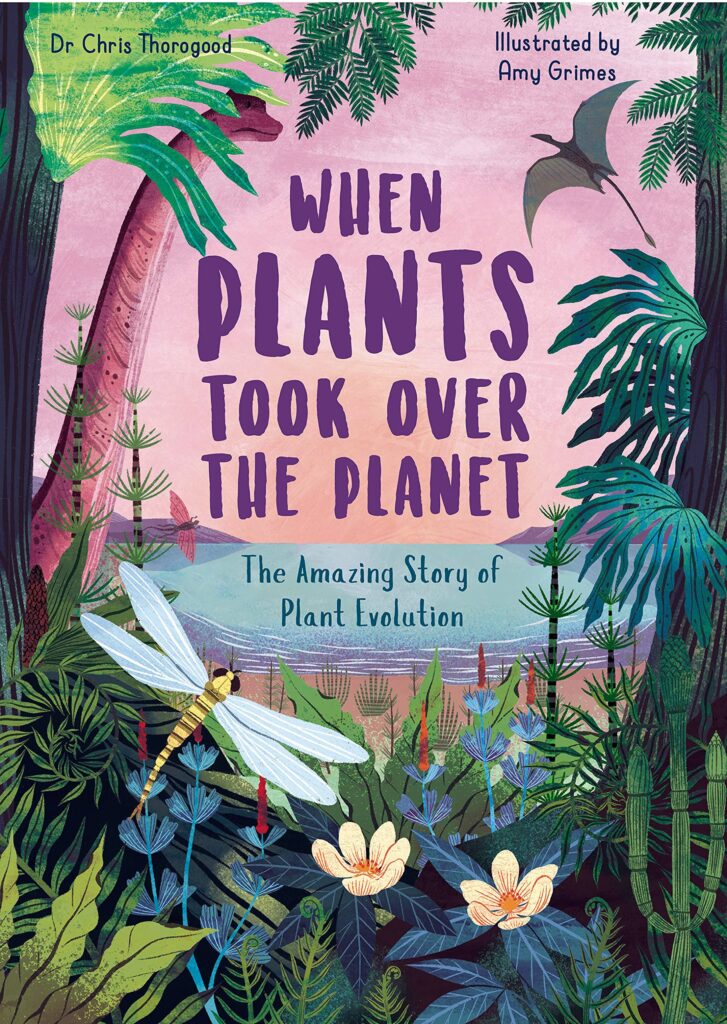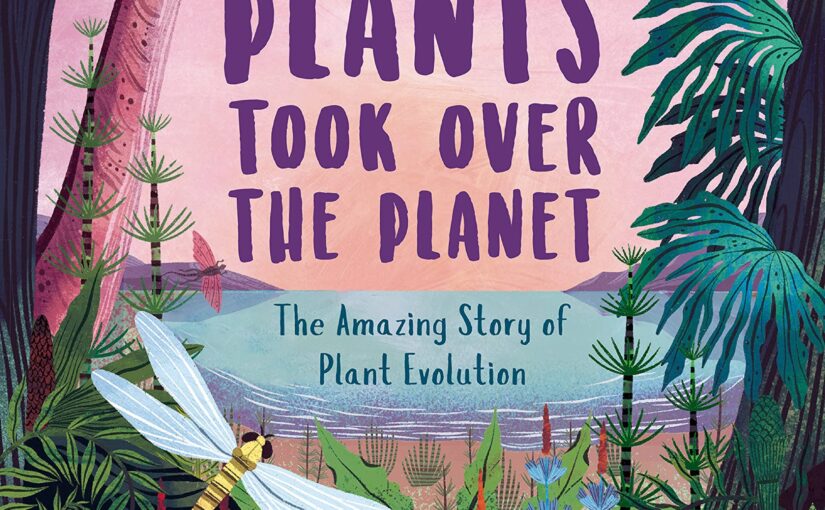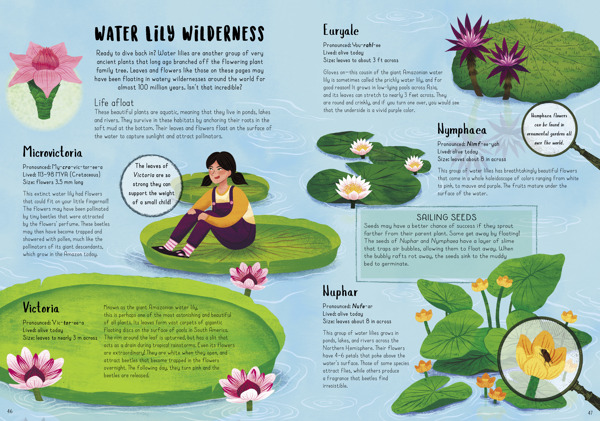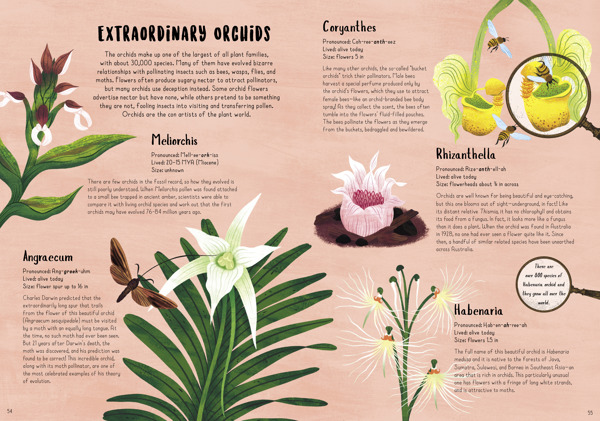We have a dinosaur tree in our front yard. It’s my favorite tree, having said that, I don’t know any people who have a preference for their tree. When Plants Took Over The Planet is an illustrated book that will really grow on STEM kids, plant geeks, science students, dinosaur people, or just those who want to be entertained while learning about plant evolution.

The Amazing Story of Plant Evolution is the subtitle to When Plants Took Over The Planet. However, it’s the title that might remind some of the STEM-minded readers about the seeds from whence this book came. When The Whales Walked and When We Became Humans are the literary siblings to When Plants Took Over The Planet. They’re all similar to an extent in their thorough coverage of the topic, the layout, as well as how utterly smart they are.
By smart, I mean really intelligent and the kind of illustrated book that middle school students and up can learn from. When Plants Took Over The Planet looks at over 200 species of plants that have evolved through time. Some of the profiles are as short as a couple of sentences, while others might need a couple of paragraphs to briefly explain their story.
The text in these paragraphs is written on a level that most fourth graders will be able to read by themselves and understand. They’ll be able to read it, but their comprehension, because the book is so loaded with information, might not be as deep as they like or as it needs to be. Again, this is an intelligent book, that’s crafted in a manner that young readers will be able to extrapolate the information. Assuming that those ages are doing research papers that aren’t too complex they’ll be fine jotting down the high points from the book and dazzling their teachers with their big brains. The art, combined with the text makes it approachable to those young readers in a way where it’s not scary or intimidating.
Once they start reading the book is when the knowledge starts. We learn that plants started to creep out of the water about 470 million years ago. Over the next, 100 million years or so the different layers of dirt required for certain plants started to find their level. The timeline of plants, the plant family tree, algae, leaves, and monstrous sky-scraping trees are all laid out. Most readers probably never knew that there was an order to plants and their evolution. It makes sense that they all didn’t evolve at the same. Other living things certainly evolved at different rates-why should the apes get all of the attention when it comes to changes that happen over a million centuries or two?
Elementary-aged students have an enormous ability to grow intellectually. As such, I’m a firm believer in the fact of giving them too much information and seeing what amount of it they’re able, or want to ingest. When Plants Took Over The Planet is cover to cover with complex plant species names that elementary readers, or their parents, won’t be able to pronounce. Thankfully, there’s a pronunciation key that breaks down how to say things like Ark-eefruck-uhss or Glass-opt-terr-ids. The illustrations help lay a friendly path for those aged readers too. The text on the pages briefly explains the period of plant evolution or characteristics of plants from the featured era. The combination of these two things is that young readers will be curious about the content and not too scared of the words.
When Plants Took Over The Planet, The Amazing Story of Plant Evolution is by Dr. Chris Thorogood with illustrations by Amy Grimes and available on QEB Publishing, an imprint of Quarto Publishing.
There are affiliate links in this post.







 Facebook
Facebook Twitter
Twitter Flickr
Flickr GooglePlus
GooglePlus Youtube
Youtube